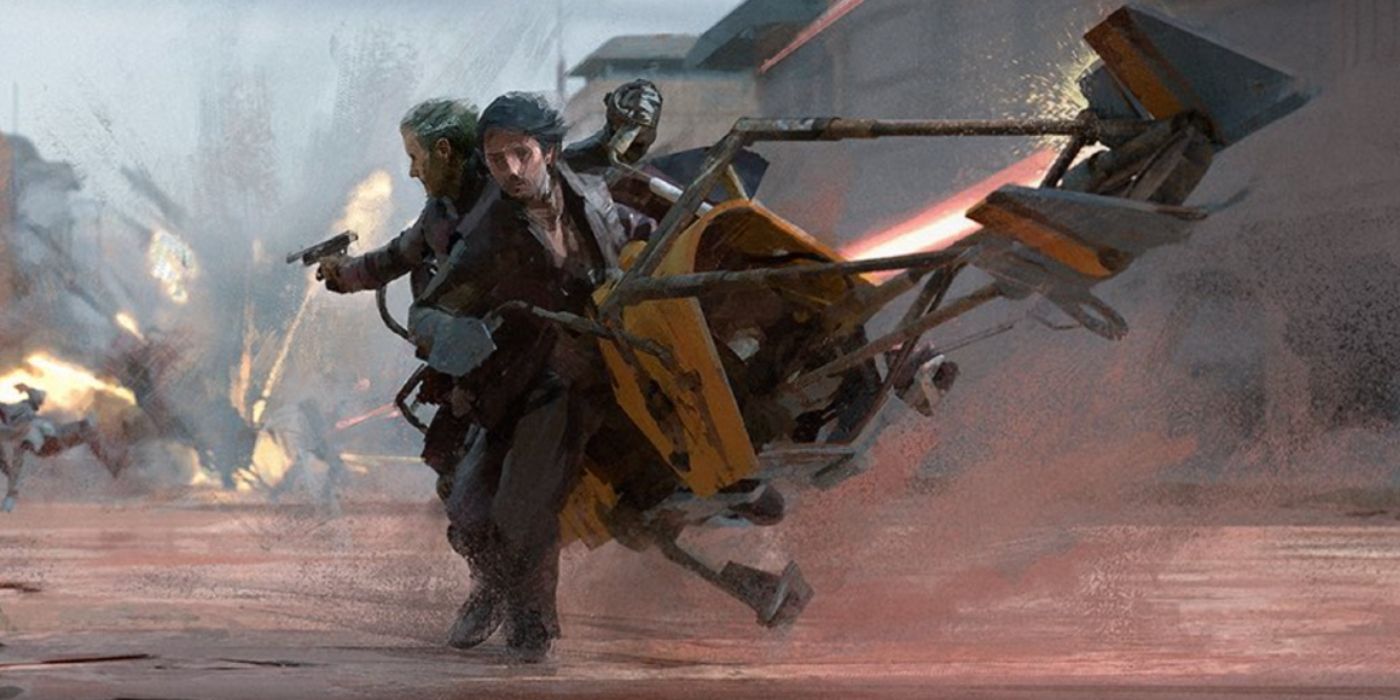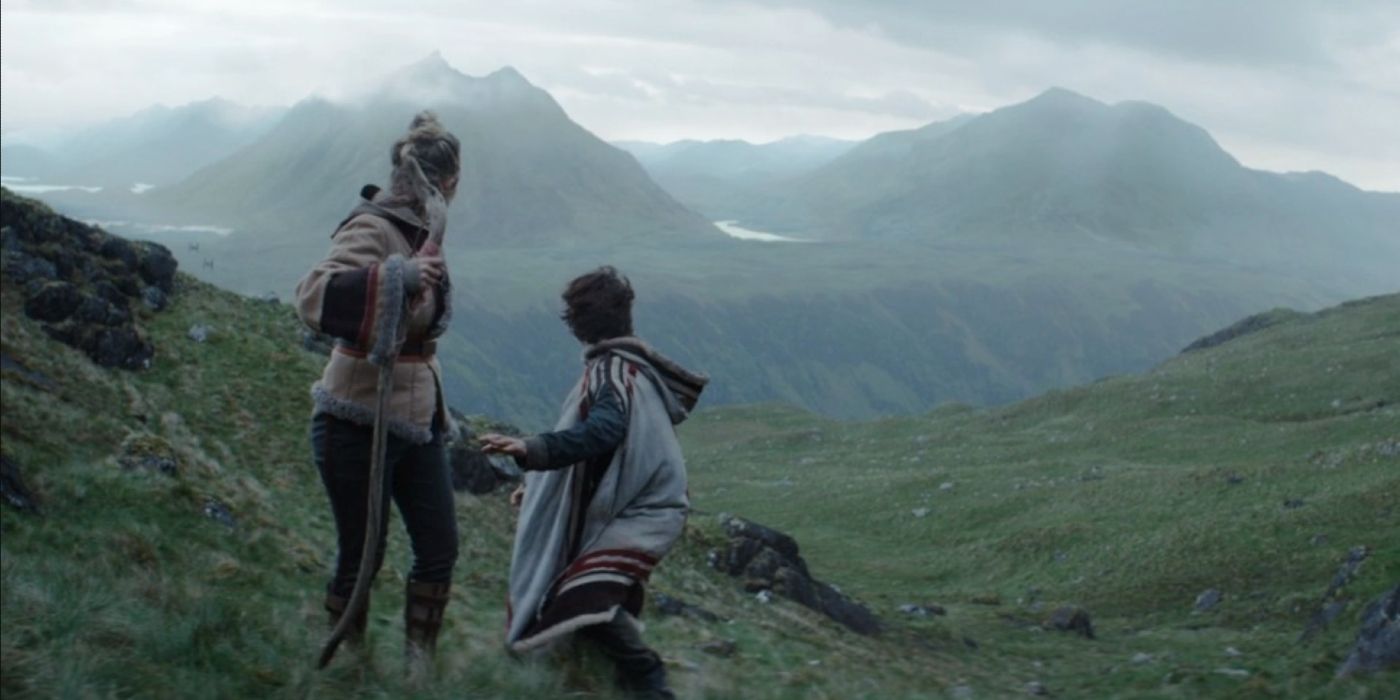Following the Andor season 1 finale last week, a new social media post compares the Star Wars show's impressive concept art to what ended up on the screen. Serving as a prequel to Rogue One: A Star Wars Story, Andor chronicles the formative years of Diego Luna's titular character before he became a hero of the Rebellion. The new show, which premiered on Disney+ at the beginning of September, earned rave reviews from critics and audiences alike for its more mature approach to the Star Wars universe and its impressive visuals. Andor season 2 has already entered production and is expected to take audiences up to the beginning of Rogue One: A Star Wars Story.
In a recent tweet, the official Disney+ account shared new concept art from Andor alongside the final frame counterparts from the actual show, demonstrating just how close the two ended up being on many occasions. Among the shots featured in the comparison are Cassian and Luthen's (Stellan Skarsgård) speeder bike escape, Mon Mothma's (Genevieve O'Reilly) vehicle exit on Coruscant, and the design of Narkina 5 prison. Check out the concept art to final frame comparisons below.
Why Andor Looked More Like Classic Star Wars Than Other Shows
From the moment Andor's first trailer was released, many fans took to social media to gush about the show's jaw-dropping visuals and how different they looked from other Disney+ Star Wars series. The Mandalorian broke new ground upon its release back in 2019 by pioneering a technology known as the Volume. This new filmmaking technique involves shooting actors in front of a massive bank of screens that can simulate any environment in real-time, essentially eliminating the need for green screen, which was widely used in the Star Wars prequels. While the Volume was used to great effect in The Mandalorian, subsequent shows like The Book of Boba Fett and Obi-Wan Kenobi were criticized for not necessarily using the technology as effectively.
Andor, on the other hand, opted to shoot as many scenes as possible on location or on real sets. The Aldhani episodes, for example, were shot on location in Scotland, which provided a stunning backdrop for Cassian's integration into Vel Sartha's (Faye Marsay) band of rebels and their subsequent heist. Similarly, to create the urban environment on Ferrix, the production actually built an entire city set, instead of using the Volume or green screen. Andor certainly features plenty of visual effects, like all other Star Wars projects, but the use of real locations and sets ultimately gives the show a tangible quality to it that other Star Wars shows just don't have.
Although the original Star Wars trilogy made clever use of blue screen and matte paintings to bring its various worlds to life, the limited technology of the time meant that many scenes were filmed on location or on constructed sets. For many fans, Andor's visuals have been a breath of fresh air after the heavy green screen usage in George Lucas’ prequels and the recent shows' reliance on the Volume. It's likely that Andor season 2 will continue this emphasis on using real locations and sets, but hopefully, other Star Wars shows also follow Andor's lead and make a concerted effort to make their environments feel more tangible and real.
Source: Disney+/ Twitter


